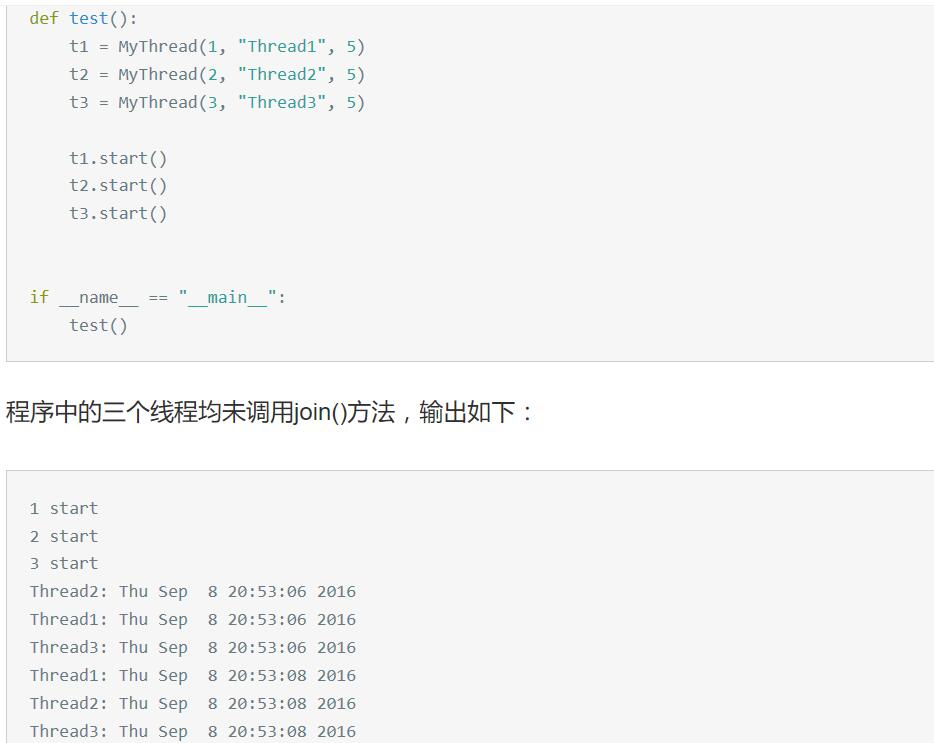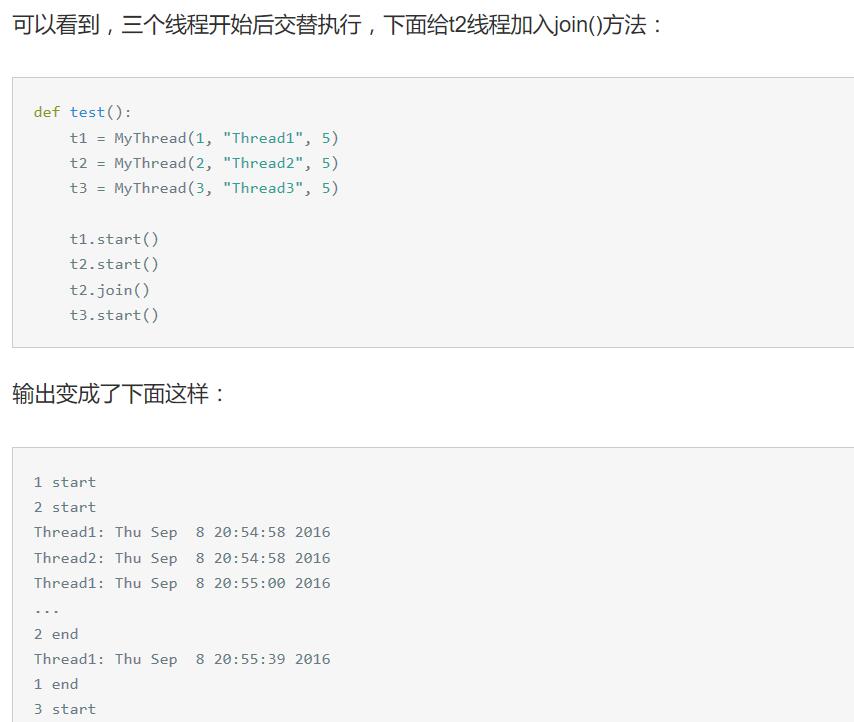1. Python多线程介绍
Python提供了两个有关多线程的标准库,thread和threading。thread提供了低级别的,原始的线程和一个锁。threading则是一个高级模块,提供了对thread的封装。一般情况下,使用threading是比较好的做法。
使用threading实现线程,只需要从threading.Thread类继承,并重写其中的__init__()方法和run()方法。
from threading import Thread
class MyThread(Thread):
def __init__(self):
Thread.__init__(self)
def run(self):
print(self.thread_id, "start")
threading提供了一个锁:lock = threading.Lock(),调用锁的acquire()和release()方法可以使线程获得和释放锁。
需要注意的是,Python有一个GIL(Global Interpreter Lock)机制,任何线程在运行之前必须获取这个全局锁才能执行,每当执行完100条字节码,全局锁才会释放,切换到其他线程执行。
所以Python中的多线程不能利用多核计算机的优势,无论有多少个核,同一时间只有一个线程能得到全局锁,只有一个线程能够运行。
那么Python中的多线程有什么作用呢?为什么不直接使用Python中的多进程标准库?这里要根据程序执行的是IO密集型任务和计算密集型任务来选择。
当执行IO密集型任务时,比如Python爬虫,大部分时间都用在了等待返回的socket数据上,CPU此时是完全闲置的,这种情况下采用多线程较好。
当执行计算密集型任务时,比如图像处理,大部分时间CPU都在计算,这种情况下使用多进程才能真正的加速,使用多线程不仅得不到并行加速的效果,反而因为频繁切换上下文拖慢了速度。
2. threading实现生产者消费者
from threading import Thread
import time
queue = []
class Producer(Thread):
def __init__(self,name):
Thread.__init__(self) #调用未绑定的超类构造方法【必须显式调用父类的构造方法,否则不会执行父类构造方法,这个跟Java不一样】
self.name = name
def run(self):
while True:
queue.append(1)
print("Producer: %s create a product" % self.name)
print("Producer: %s put a product into queue" % self.name)
time.sleep(0)
if len(queue) > 20:
print ("queue is full!")
time.sleep(1)
class Consumer(Thread):
def __init__(self,name):
Thread.__init__(self)
self.name = name
def run(self):
while True:
try:
queue.pop()
print("Consumer: %s get a product" % self.name)
time.sleep(2)
except:
print("Queue is empty!")
time.sleep(2)
print("Consumer: %s sleep 2 seconds" % self.name)
if __name__ == '__main__':
p1 = Producer("Producer-1")
c1 = Consumer("Consumer-1")
c2 = Consumer("consumer-2")
p1.start()
c1.start()
c2.start()
输出如下:
Producer: Producer-1 create a product Producer: Producer-1 put a product into queue queue is full! Producer: Producer-1 create a product Producer: Producer-1 put a product into queue queue is full!
分析:输出显示满了之后仍然显示了生产者在创建产品,表明线程run()方法中的运行次序被打乱了。这是因为没有加锁,导致消费者线程运行到一半的时候,生产者线程获得了CPU。
queue线程安全容器
ueue这一线程安全的容器,可以方便的和多线程结合起来。 Queue包括:queue_tmp = Queue.Queue(10)
class Producer(Thread):
def __init__(self,name):
Thread.__init__(self) #调用未绑定的超类构造方法【必须显式调用父类的构造方法,否则不会执行父类构造方法,这个跟Java不一样】
self.name = name
def run(self):
while True:
queue_tmp.put(0)
print("Producer: %s create a product" % self.name)
print("Producer: %s put a product into queue
" % self.name)
class Consumer(Thread):
def __init__(self,name):
Thread.__init__(self)
self.name = name
def run(self):
while True:
queue_tmp.get()
print("Consumer: %s get a product" % self.name)
3. join()函数用法测试
join()函数的原型是join(timeout=None),它的作用是阻塞进程一直到线程退出或者到timeout的时间结束。


参考文章:https://www.jianshu.com/p/f09a112a71f7